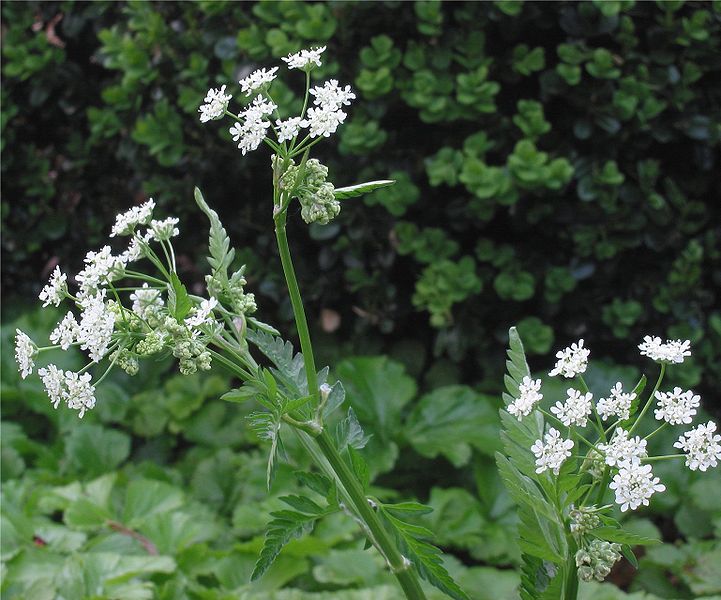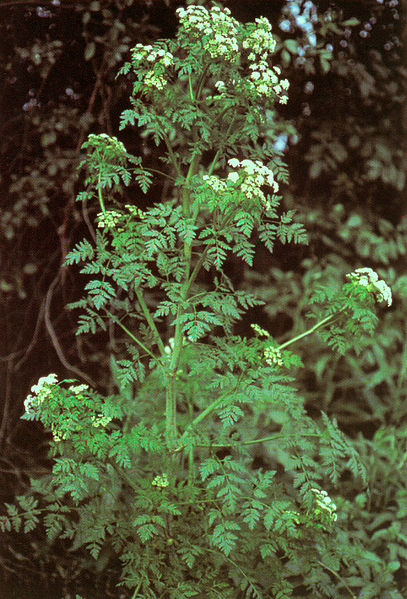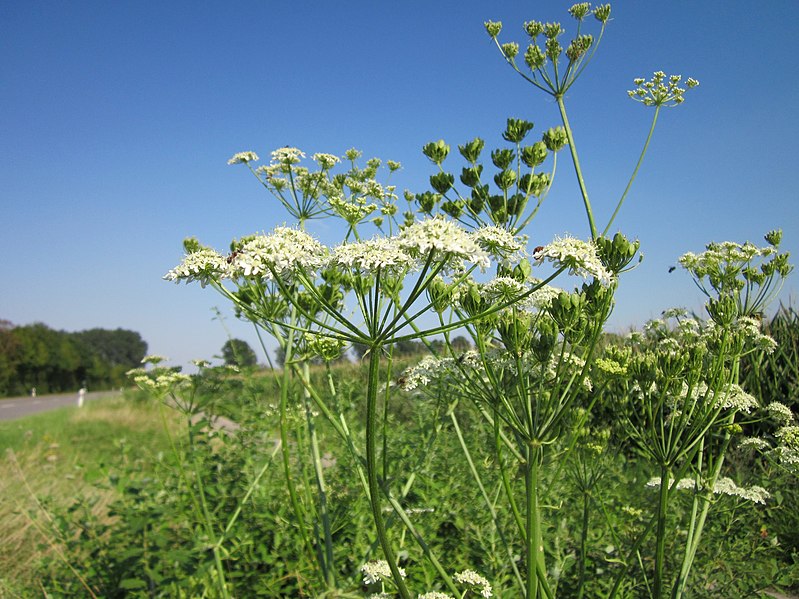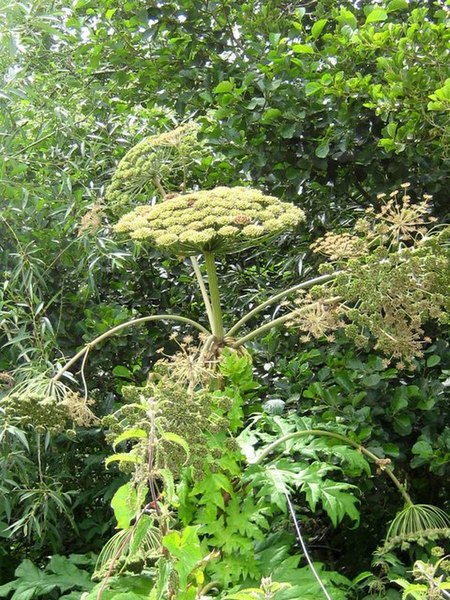GIANT HOGWEED: DANGERS, LAW, IDENTIFICATION, AND CONTROL
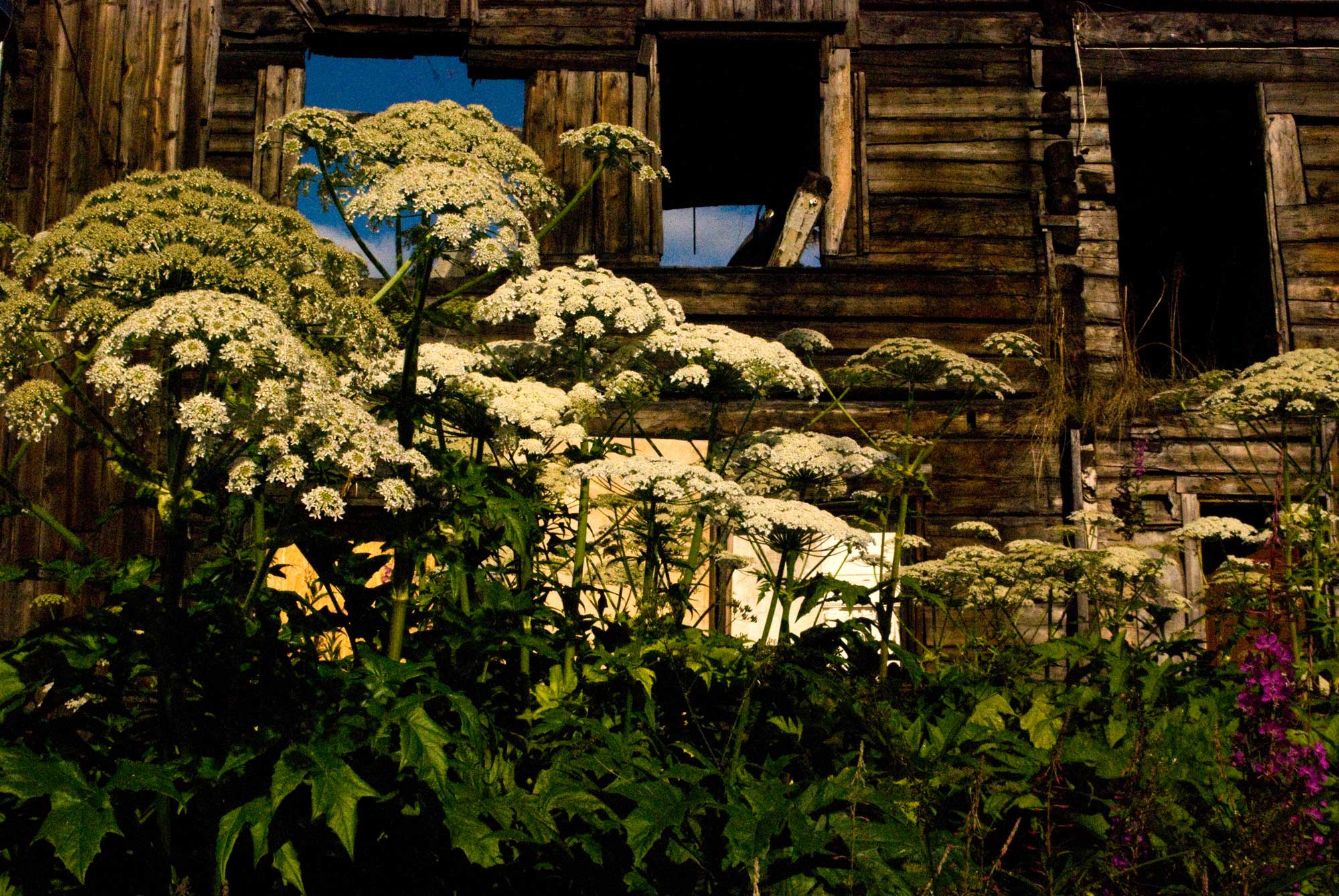
Giant hogweed
Giant hogweed might seem harmless – it looks very similar to common native species – but it’s dangerous to the unwary.
In May, eagle-eyed gardeners, horticulturalists and arborists will start noticing a familiar, sharply-serrated leaf among the spring vegetation: giant hogweed.
The sprigs won’t stay small for long. Giant hogweed, a species first brought to the UK as an ornamental plant, can reach 3.5m/11.5ft in height, with flowerheads (‘umbels’) of up to 60cm/2ft.
Giant hogweed dangers
Giant hogweed’s sap is ‘phototoxic’. It contains a chemical called furocoumarin, which makes skin extremely sensitive to sunlight.
If the sap gets onto your skin and the area is exposed to sunlight, your skin can come up in a rash and blister, sometimes badly. It’s painful, and it’s not over and done with quickly – the blistering can recur over months and even years.
The reaction is called phytophotodermatitis.
- The reaction will start in the 24 hours after exposure to phototoxic sap
- It will be worst at around 48-72 hours after
- Wet skin, sweating, and heat can all make it worse (remember, you’re probably coming into contact with giant hogweed in the summer, so this is a real concern)
If the sap gets into your eyes, you risk eye damage and even blindness.
If you get giant hogweed sap on your skin:
|
· Immediately and thoroughly wash the area with soap and cold water and then cover it · Get medical advice |
- Don’t expose the area to sunlight for a few days
- Consider using a high SPF sun-screen on the area for a few months
If you get giant hogweed sap in or around your eyes
- Immediately and thoroughly rinse your eyes
- Don’t expose your face to the sun
- Get someone to take you to A&E
Protecting yourself from giant hogweed
Prevention is better than cure – the first line of defence should be stopping the sap getting onto your skin at all.
First, learn how to identify giant hogweed (see below).
If you see the plant while out and about, don’t touch it. Notify your local council if the problem is on public land (e.g. by the river).
Removing giant hogweed safely
If you identify giant hogweed on your land, think about the scope of the problem. If there’s a lot of it, consider calling in a professional. They should wear full protective clothing, including face protection (especially if using a strimmer).
If you decide to deal with the problem yourself, take precautions.
- Carry out work on an overcast day, pausing during any sunny periods
- Pull out young plants when the soil is moist – May is a good time, as the plant will have reached a decent height but not yet flowered
- If you use a chemical weedkiller, use RHS guidance to minimise impact on the environment
- Wear clothing that covers as much skin as possible
- Wear good gardening gloves with no holes or tears
- Wear eye protection
- If you get sap on yourself, rinse off immediately (if you have a large plot of land, consider having a container of water and some soap on hand so you can deal with it right away)
Disposing of giant hogweed
Giant hogweed is a controlled waste. If it’s taken off-site, it has to be disposed of in licensed landfills with specific documentation.
If you’ve used experienced professionals, they’ll know how to deal with this. If you’ve done the work yourself, it is probably easier to compost or burn the waste on your property.
Invasive species: the laws around giant hogweed
Giant hogweed is an invasive/non-native species (covered by the Wildlife and Countryside Act 1981 and the Wildlife and Natural Environment (Scotland) At 2011).
It’s an offence to plant it, or to cause it to spread. This means you also need to be careful when disposing of giant hogweed, so you don’t accidentally spread seeds.
You aren’t legally obligated to remove giant hogweed from your land – but, if you allow it to grow onto other people’s property, they could take a private ‘nuisance’ action against you. In theory, local authorities could also formally require you to control the spread of giant hogweed on your land (using a Community Protection Notice).
Identifying giant hogweed
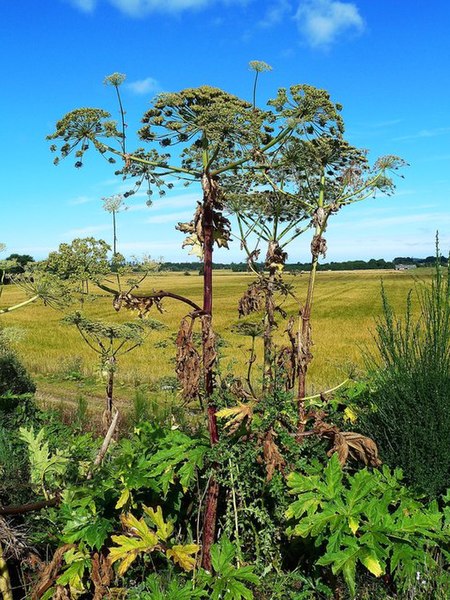
Image attribution: Mary and Angus Hogg
Giant hogweed leaves
- Sharply serrated leaves
- Divided into three or five sections/lobes
- Up to 3m long
- Bristles on the underside
Giant hogweed stems
- Green, with red/purple blotches on mature plants
- Bristly, especially around the joints – coarse, white hairs
- Up to 3.5m/11.5ft high (more likely 2-3m/6-10ft)
Flowers
- White flowers, rarely with pinkish tinge
- Huge ‘umbels’ made up of 50+ flowers
- Seeds are marked with dark stripes (oil ducts) – two stripes on one side and four on the other
Telling giant hogweed apart from cow parsley, hemlock and common hogweed
Giant hogweed looks very similar to some common native plants, but there are some ways to tell them apart.
|
|
Cow parsley |
Hemlock |
Common hogweed |
Giant hogweed |
|
|
Image attribution: Rasbak |
|
Image attribution: AnRo0002 |
Image attribution: Sarah Smith |
|
Dangerous? |
No |
Yes – toxic |
No |
Yes - phototoxic |
|
Leaves |
Fern-like, divided |
Very similar to cow parsley (use stems for ID) |
Small hairs, soft serrations |
Hairless, sharp serrations, large |
|
Height |
Up to 1-1.5m (3-4ft) |
Up to 2.5m (8ft) |
Up to 2-3m (6-10ft) |
Up to 4m+ (13ft+) |
|
Stem |
Hairy, green |
Smooth, green with purple/red blotches |
Hairy, green |
Hairy, especially the joints, green, sometimes purple/red blotches |
|
Flowers All have ‘umbels’ (umbrella shapes) of white flowers, which are similar enough that they shouldn’t be used as a main source of ID |
||||

